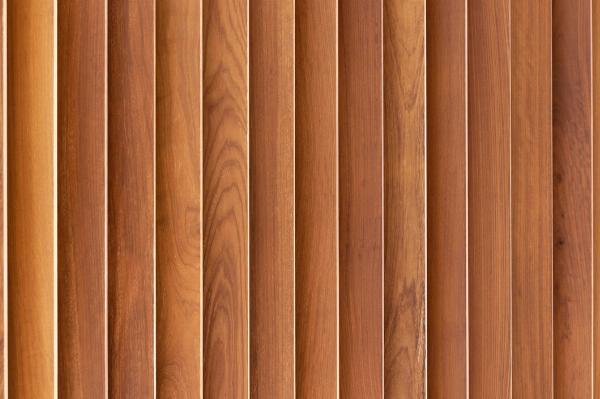The Role of Wood Panels Australia in Sustainable Building

Strong 8k brings an ultra-HD IPTV experience to your living room and your pocket.
Sustainable building practices are increasingly shaping the future of construction, with a growing emphasis on materials that contribute to environmental stewardship. Wood panels have emerged as a significant component in this movement, offering both aesthetic and ecological benefits. This article explores the role of wood panels in sustainable building in Australia, examining their advantages, applications, and impact on the environment.
Introduction to Sustainable Building
Sustainable building, also known as green building or eco-friendly construction, focuses on minimizing the environmental impact of structures throughout their lifecycle. This approach considers factors such as energy efficiency, resource conservation, and waste reduction. Key principles of sustainable building include:
Energy Efficiency: Reducing energy consumption through efficient design and technology.
Resource Efficiency: Utilizing sustainable materials and minimizing waste.
Indoor Environmental Quality: Ensuring healthy indoor environments through good air quality and natural light.
Lifecycle Impact: Considering the environmental impact of materials from production to disposal.
Wood Panels Australia: An Overview
Wood panels are an essential material in modern construction, prized for their versatility and aesthetic appeal. In Australia, wood panels are available in various types, including:
Plywood: Made from layers of wood veneer glued together, offering strength and stability.
MDF (Medium-Density Fibreboard): Engineered from wood fibers, providing a smooth surface for painting and finishing.
Particleboard: Composed of wood chips and resin, used for cost-effective applications.
Solid Wood Panels: Made from solid timber, known for their durability and natural beauty.
Environmental Benefits of Wood Panels
1. Renewable Resource
Wood is a renewable resource when sourced sustainably. Australian forestry practices ensure that timber is harvested in a way that allows forests to regenerate naturally. Certified wood panels, such as those with Forest Stewardship Council (FSC) certification, guarantee that the timber comes from responsibly managed forests.
2. Carbon Sequestration
Wood panels play a crucial role in carbon sequestration. Trees absorb carbon dioxide from the atmosphere during their growth, storing it in their biomass. By using wood panels in construction, this carbon remains locked away, reducing the overall carbon footprint of buildings.
3. Energy Efficiency
Wood panels contribute to the energy efficiency of buildings. Their natural insulating properties help maintain comfortable indoor temperatures, reducing the need for artificial heating and cooling. This results in lower energy consumption and reduced greenhouse gas emissions.
4. Reduced Embodied Energy
The production of wood panels generally requires less energy compared to materials like concrete and steel. The lower embodied energy of wood panels makes them a more environmentally friendly choice, as they have a smaller carbon footprint associated with their manufacture and transport.
Applications of Wood Panels in Sustainable Building
1. Residential Construction
In residential buildings, wood panels are used for various applications, including flooring, wall cladding, and ceilings. Their natural beauty and thermal insulation properties make them a popular choice for creating comfortable, eco-friendly homes. Additionally, wood panels contribute to a warm and inviting aesthetic, enhancing the overall living experience.
2. Commercial Buildings
Wood panels are increasingly used in commercial spaces, such as offices, retail stores, and hospitality venues. Their acoustic properties make them ideal for creating quiet, productive work environments. In addition, the use of wood panels in commercial interiors can help achieve green building certifications, such as LEED (Leadership in Energy and Environmental Design) or Green Star.
3. Public Buildings
Public buildings, including schools, libraries, and community centers, benefit from the sustainable attributes of wood panels. Their natural appearance and sound-absorbing qualities contribute to a pleasant and functional environment. Wood panels also align with the principles of biophilic design, which emphasizes the connection between people and nature.
Challenges and Considerations
1. Sourcing and Certification
To maximize the sustainability of wood panels, it is essential to ensure they are sourced from certified, sustainable forests. Not all wood panels are created equal, and some may come from unsustainable sources. Choosing products with certification labels, such as FSC or PEFC (Programme for the Endorsement of Forest Certification), helps ensure responsible sourcing.
2. Maintenance and Durability
While wood panels offer many environmental benefits, they require proper maintenance to ensure their longevity. Regular upkeep, including sealing and refinishing, helps protect wood panels from moisture, pests, and wear. Ensuring that wood panels are treated and maintained properly extends their lifespan and maintains their performance as a sustainable building material.
3. End-of-Life Considerations
At the end of their lifecycle, wood panels should be disposed of responsibly. Options for recycling or repurposing wood panels can help reduce waste and extend the material’s useful life. In some cases, wood panels can be reclaimed and reused in new construction or renovation projects.
The Future of Wood Panels in Sustainable Building
The future of wood panels in sustainable building in Australia looks promising. Innovations in wood technology, such as cross-laminated timber (CLT) and glulam (glued laminated timber), are expanding the possibilities for wood in high-rise and large-scale construction. These advanced wood products offer enhanced strength, stability, and environmental performance.
Additionally, ongoing research and development aim to improve the sustainability of wood panel production processes. Advances in sustainable forestry practices, material science, and recycling technologies will further enhance the role of wood panels in green building.
Conclusion
Wood panels Australia play a significant role in sustainable building practices in Australia, offering a range of environmental and aesthetic benefits. Their renewable nature, carbon sequestration capabilities, and energy efficiency make them an attractive choice for eco-friendly construction. By choosing certified wood panels and ensuring proper maintenance and disposal, builders and designers can contribute to a more sustainable built environment.
As the construction industry continues to evolve, wood panels will remain a key material in achieving sustainability goals, driven by innovations and a growing commitment to environmental responsibility. Whether used in residential, commercial, or public buildings, wood panels offer a valuable contribution to creating healthier, more sustainable spaces.
Note: IndiBlogHub features both user-submitted and editorial content. We do not verify third-party contributions. Read our Disclaimer and Privacy Policyfor details.


